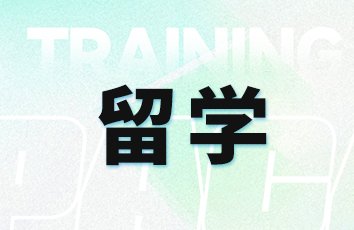剑桥雅思19电子版资源,阅读题回忆版Test1
剑桥雅思19收集了雅思考试(A类)真题共4套,每一套考试题有3篇阅读题。对雅思考生们了解近年来的考试内容、考试题型有较大帮助。羊驼雅思整理了剑雅19阅读真题(网友回忆版)Test 1 Passage 3供大家参考。

相关阅读:剑桥雅思19阅读题电子版Test1 Passage1回忆版
READING PASSAGE 3
You should spend about 20 minutes on Questions 27-40. which are based on Reading Passage 3 below.
The persistence and peril of misinformation 错误信息的持续性和危险性
Brian Southwel looks at how human brains verify information and discusses some of the challenges of battling widespread faisehoods Misinformation - both deliberately promoted and accidentally shared - is perhaps an inevitable par't of the world in which we live, but it is not a new problem, People likely have lied to one another for roughly as long as verbal communication has existed, Deceiving others can ofrer an apparent opportunity to gain strategic advantage, to motivate others to action, or even to protect interpersonal bonds, loreover, people inadvertently have been sharing inaccurate information with one another for thousands of years.
However, we currently live in an era in which technology enables information to reach large audiences distributed across the globe, and thus the potential for immediate and widespread effects from misinformation now looms larger than in the past, Yet the means to correct misinformation might, over time, be found in those same patterns of mass communication and of the facilitated spread of inforation.
The main worry regarding misinformation is its potential to unduly influence attitudes and behavior, leading people to think and act differently than they would if they were correctly informed, as suggested by the research teams of Stephan Lewandowsky of the University of Bristol and Elizabeth Marsh of Duke University, among others. In other words, we worry that misinformation might lead people to hold misperceptions (or false beliefs) and that these misperceptions, especially when they occur among large groups of people, may have detrimental, downstream consequences for health, social harmony, and the political climate.
At least three observations related to misinformation in the contemporary mass-mmedis environment warrant the attention of researchers, policy makers, and really everyone who watches television, listens to the radio, or reads information online, First of all, people who encounter misinformation tend to believe it, at least inilially, Secondly, electronic and print media often do not block many types of misinformation before it appears in content available to large audiences. Thirdly, countering misinformation once it has enjoyed wide exposure can be a resource-intensive effort.
Knowing what happens when people initially encounter misinformation holds tremendous importance for estimating the potential for subsequent problems. Alhough it is fairly routine for indiyiduals to come across information that is false, the question of exaclly how -and when - we mentally label information as true or false has garnered philosophical debate. The dilemma is neatly summarized by a contrast between how the 17th-century philosophers René Descartes and Baruch Spinoza described human information engagement, with conflicting predictions that only recently have been empirically tested in robust ways, Descartes argued that a person only accepts or reiecls information after considering its lruth or falsehood: Spinoza argued that people accept all encountered information (or misinformation) by delault and then subsequently verify or reject it through a separate cognitive process. In recent decades, empirical evidence from the research teams of Erik Asp of the University of Chicago and Daniel Gilbert at Harvard University, among others, has supported Spinoza's account: people appear to encode all new inlormation as if it were true, even if only momentarily, and later tag the information as being either true or false, a pattern that seems consistent with the observation that mental resources for skepticism physically reside in a different part of the brain than the resources used in perceiving and encoding.
What about our second observation that misinformation often can appear in electronic or print media without being preemptively blocked? In support of this, one might consider the nature of regulatory structures in the United States: regulatory agencies here tend to focus on post hoc detection of broadcast information, Organizations such as the Food and Dmg Administration (FDA) offer considerable moniloring and notification functions, but these roles typically do not involve preemptive censoring. The FDA oversees direct-to-consumer prescription drug advertising, for example, and has developed mechanisms such as the 'Bad Ad’ program, through which people can report advertising in apparent violation ofFDA guidelines on drug risks.
Such programs, although laudable and useful, do not keep false advertising offthe airwaves. In addition, even misinformation that is successfully corrected can continue to affect atlitudes.
This leads us to our third observation: a campaign to correct misinlormation, even ifrhetorically compelling, requires resources and planning to accomplish necessary reach and firequency. For corrective campaigns to be persuasive, audiences need to be able to comprehend them, which requires either effort to fiame messages in ways that are accessible or elort to educale and sensitize audiences to the possibility ofmisinformation, That some audiences might be unaware of the potential lor misinformation also suggests the utility of media literacy elforts as early as elementary school, Even with journalists and scholars pointing to the phenomenon of 'fake news’, people do not distinguish belween demonstrably false stories and those based in fact when scanning and processing written information.
We live at a time when widespread misinformation is common, Yet at this time many people also are passionately developing potential solutions and remedies. The journey forward undoubtedly will be a long and arduous one. Future remedies will require not only continued theoretical consideration but also the development and maintenance of consistent monitoring tools - and a recognition among fellow members ofsociety thal claims which find prominence in the media that are insuffciently based in scienlifc consensus and social reality should be countered.
Misinformation arises as a result ofhuman lallibilily and human inlormalion needs. To overcome the worst effects of the phenomenon, we will need coordinaled eflorls over time, rather than any singular one-lime panacea we could hope lo offer.
Questions 27-30
Choose the correct letter A, B, C or D.
Write the correct letter in boxes 27-30 on your answer sheet.
27 What point does the writer make about misinformation in the first paragraph?
A Misinformation is a relatively recent phenomenon.
B Some people find it easy to identify misinformation.
C Misinformation changes as it is passed from one person to another.
D There may be a number of reasons for the spread of misinformation.
28 What does the writer say about the role of technology?
A It may at some point provide us with a solution to misinformation.
B It could fundamentally alter the way in which people regard information.
C It has changed the way in which organisations use misinformation.
D It has made it easier for people to check whether information is accurate.
29 What is the writer doing in the fourth paragraph?
A comparing the different opinions people have of misinformation
B explaining how the effects of misinformation have changed over time
C outlining which issues connected with misinformation are significant today
D describing the attitude of policy makers towards misinformation in the media
30 What point does the writer make about regulation in the USA?
A The guidelines issued by the FDA need to be simplified.
B Regulation does not affect people's opinions of new prescription drugs
C The USA has more regulatory bodies than most other countries.
D Regulation fails to prevent misinformation from appearing in the media.
Questions 31-36
Complete the summary using the list of phrases, A-J, below.
Write the correct letter, A-J, in boxes 31-36 on your answer sheet.
| What happens when people encounter misinformation? Although people have 31…………to misinformation, there is debate about precisely how and when we label something as true or untrue. The philosophers Descartes and $pinoza had 32…………. about how people engage with information. While Descartes believed that people accept or reject information after considering whether it is true or not, Spinoza argued that people accepted all information they encountered (and by default misinformation) and did not verify or reject it until afterwards. Moreover, Spinoza believed that a distinct 33…………. is, involved in these stages.Recent research has provided 34…………. for Spinoza's theory and it would appear that people accept all encountered information as if it were true, even if this is for an extremely 35…………and do not label the information as true or false until later. This is consistent with the fact that the resources for scepticism and the resources for perceiving and encoding are in 36…………in the brain. |
| A constant conflict B additional evidence C different locations | D experimental subjects E E short period F extreme distrust | G frequent exposureH H mental operation I dubious reason J different ideas |
相关推荐
热门话题:





